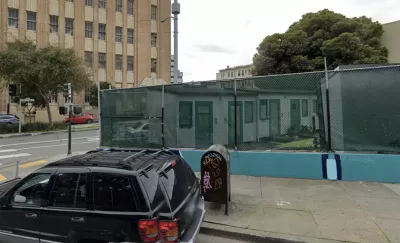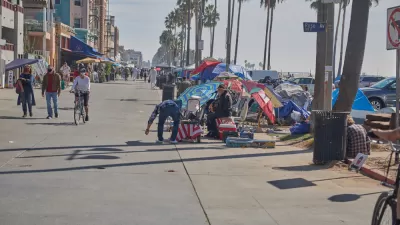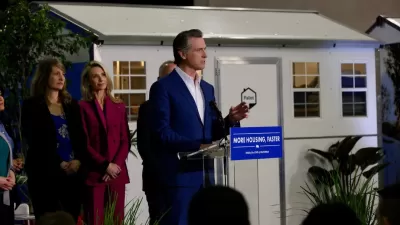Citing ‘absurd’ costs and community concerns, city supervisors are reevaluating a plan to build a ‘tiny home village’ for unhoused residents in the Mission District.

San Francisco’s Mission District may not get a proposed ‘tiny home’ village after all, reports Trisha Thadani for the San Francisco Chronicle. The proposal faces backlash from local residents and concerns that its costs, projected at $100,000 per unit, are out of line with similar projects, which reportedly cost as low as $10,000 per unit. While not a panacea for the housing crisis, tiny home villages are viewed as a cost-effective and fast way to build additional shelter and get people indoors and connected with services.
“The drama over the project provides a window into just how hard it is for the city to scale its housing and shelter system, even as a recent report from the Department of Homelessness and Supportive Housing (HSH) estimated it would take more than 6,000 extra temporary and permanent beds to solve the crisis on the streets.”
The vacant city-owned lot where the community would be sited will be developed into affordable housing starting in 2025, Thadani points out. “Until then, officials hoped they could use the site to shelter those who are currently homeless in the Mission, which has struggled with a rise of people living in tents, drug use and illegal vending over the past few years.” The village would be the city's second such community. But local residents spoke out against the project, prompting county supervisors to put the plan on hold. The project was allocated $7 million, a price tag officials say could come down. Meanwhile, the difficulty of finding financially viable locations that won’t encounter neighborhood opposition makes the process of building affordable and supportive housing in San Francisco painfully slow.
FULL STORY: Neighbors fight pricey S.F. plan to build tiny homes for the homeless

Alabama: Trump Terminates Settlements for Black Communities Harmed By Raw Sewage
Trump deemed the landmark civil rights agreement “illegal DEI and environmental justice policy.”

Planetizen Federal Action Tracker
A weekly monitor of how Trump’s orders and actions are impacting planners and planning in America.

Why Should We Subsidize Public Transportation?
Many public transit agencies face financial stress due to rising costs, declining fare revenue, and declining subsidies. Transit advocates must provide a strong business case for increasing public transit funding.

Understanding Road Diets
An explainer from Momentum highlights the advantages of reducing vehicle lanes in favor of more bike, transit, and pedestrian infrastructure.

New California Law Regulates Warehouse Pollution
A new law tightens building and emissions regulations for large distribution warehouses to mitigate air pollution and traffic in surrounding communities.

Phoenix Announces Opening Date for Light Rail Extension
The South Central extension will connect South Phoenix to downtown and other major hubs starting on June 7.
Urban Design for Planners 1: Software Tools
This six-course series explores essential urban design concepts using open source software and equips planners with the tools they need to participate fully in the urban design process.
Planning for Universal Design
Learn the tools for implementing Universal Design in planning regulations.
Caltrans
Smith Gee Studio
Institute for Housing and Urban Development Studies (IHS)
City of Grandview
Harvard GSD Executive Education
Toledo-Lucas County Plan Commissions
Salt Lake City
NYU Wagner Graduate School of Public Service





























